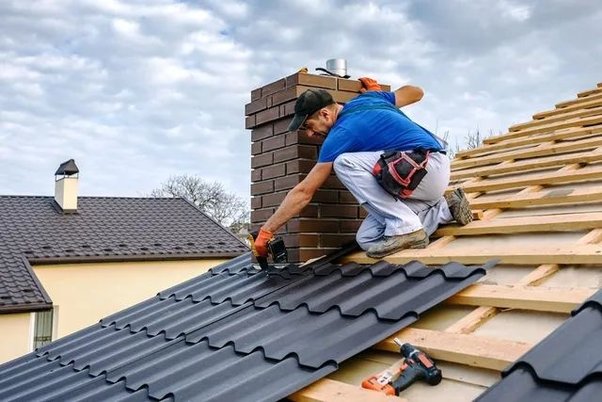
Introduction to New Roof Installation
A well-constructed roof is essential for protecting your home from the elements and maintaining its structural integrity. In this article, we’ll explore the process of new roof installation, including preparation, installation, benefits, and maintenance tips. If you’re considering a new roof for your home, browse around this website for expert advice and services to get browse around this website.
Preparing for New Roof Installation
Before installing a new roof, several important steps must be taken to ensure a successful and durable roofing system.
Roof Inspection and Assessment
Begin by conducting a thorough inspection of your existing roof to identify any underlying issues or structural concerns. This may include checking for leaks, damaged shingles, or signs of rot or deterioration. Consulting with roofing professionals can provide valuable insights and recommendations for the best course of action.
Choosing the Right Roofing Materials
Selecting the appropriate roofing materials is crucial for achieving the desired aesthetics, longevity, and performance of your new roof. Consider factors such as climate, architectural style, and budget when exploring options such as asphalt shingles, metal roofing, or tile. Additionally, prioritize materials known for their durability, energy efficiency, and resistance to weathering.
Obtaining Permits and Scheduling Installation
Before beginning the installation process, it’s important to obtain any necessary permits and approvals from local building authorities. Familiarize yourself with local building codes and regulations to ensure compliance throughout the installation process. Coordinate with roofing contractors to schedule installation at a convenient time and minimize disruptions to your daily routine.
The Roof Installation Process
Once preparations are complete, the roof installation process can begin, consisting of several key steps to ensure a properly constructed and functional roofing system.
Tear-Off and Removal of Old Roofing Materials
The first step in installing a new roof is to remove the existing roofing materials, including shingles, underlayment, and flashing. This process, known as tear-off, must be done carefully to avoid damage to the underlying substrate. Any damaged or rotted decking should be repaired or replaced to provide a solid foundation for the new roofing system.
Installation of New Roofing Components
With the old roofing materials removed, the installation of new roofing components can commence. This includes layering underlayment, drip edge, and starter shingles to provide a waterproof barrier and proper drainage. The main roofing material, such as asphalt shingles or metal panels, is then secured in place according to manufacturer specifications.
Finishing Touches and Quality Checks
Once the main roofing material is installed, attention is turned to finishing touches and quality checks to ensure the roof is properly sealed and functional.
Benefits of New Roof Installation
Investing in a new roof offers numerous benefits for homeowners, ranging from improved protection and energy efficiency to enhanced curb appeal and property value.
Enhanced Protection Against the Elements
One of the primary benefits of a new roof is enhanced protection against the elements. A properly constructed roofing system prevents water infiltration, leaks, and damage from wind, hail, and debris. By investing in quality roofing materials and professional installation, homeowners can enjoy increased structural integrity and longevity for their homes.
Improved Energy Efficiency and Home Comfort
A new roof can contribute to improved energy efficiency and home comfort by providing proper insulation and ventilation. Well-insulated roofs help regulate indoor temperatures, reducing the workload on heating and cooling systems and lowering energy bills. Proper ventilation prevents moisture buildup and attic heat buildup, contributing to a healthier and more comfortable living environment.
Enhanced Curb Appeal and Property Value
In addition to functional benefits, a new roof can enhance the overall appearance and value of your home. A fresh, well-maintained roof adds to the curb appeal and visual appeal of the property, making it more attractive to potential buyers and increasing its resale value. Whether you’re planning to stay in your home for years to come or preparing to sell, a new roof is a worthwhile investment in your property.
Maintenance and Care for New Roofing Systems
To maximize the lifespan and performance of your new roof, regular maintenance and care are essential.
Regular Inspections and Cleaning
Schedule regular inspections of your roof to check for signs of damage, wear, or debris buildup. Clear gutters and downspouts regularly to prevent water damage and ensure proper drainage. Address any issues promptly to prevent them from worsening over time.
Addressing Repairs and Maintenance Needs Promptly
If you notice any leaks, damaged shingles, or other issues with your roof, address them promptly to prevent further damage. Patch leaks, replace missing or damaged shingles, and repair flashing as needed. Consult with roofing professionals for expert advice and services to ensure repairs are done correctly and effectively.
Long-Term Preservation and Protection Strategies
To protect your new roof and extend its lifespan, consider implementing long-term preservation and protection strategies. This may include applying protective coatings, sealants, or roof treatments to enhance durability and weather resistance. Investing in routine maintenance programs can also help identify and address potential issues before they escalate, ensuring continued performance and protection for your home’s roof.


